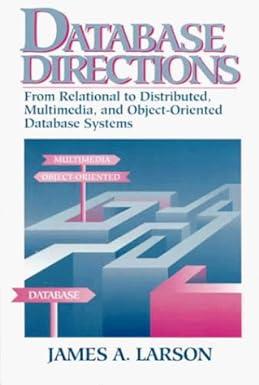Question
Consider the problem x = remainder((A*B)/C), where A, B and C are integer numbers stored at decimal addresses 900, 901 and 902, and x at
Consider the problem x = remainder((A*B)/C), where A, B and C are integer numbers stored at decimal addresses 900, 901 and 902, and x at address 910. Use 4110, 8110, 5010 as A, B and C to demonstrate sample data. Using the IAS instruction set: a. Write a pseudocode algorithm describing the low-level steps of your solution. b. Write the corresponding program, showing how it is stored in memory. Use a four-column table where the first column is the hexadecimal address, the second column is the binary code stored at this address (whole 40 bit words), the third column is its hexadecimal equivalent, and the fourth column is the symbolic representation (a number or two instructions). The program starts at (decimal) address 500.
Step by Step Solution
There are 3 Steps involved in it
Step: 1

Get Instant Access to Expert-Tailored Solutions
See step-by-step solutions with expert insights and AI powered tools for academic success
Step: 2

Step: 3

Ace Your Homework with AI
Get the answers you need in no time with our AI-driven, step-by-step assistance
Get Started


